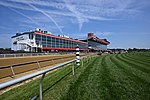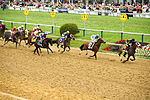Sinai Hospital (Maryland)

Sinai Hospital is an American private hospital based in Baltimore, Maryland, that was founded in 1866 as the Hebrew Hospital and Asylum. It is now a Jewish-sponsored teaching hospital that provides care for patients in the greater Baltimore City, Baltimore County and surrounding communities. The implantable cardioverter-defibrillator (ICD) was invented here by the team of Dr. Michel Mirowski, Dr. Morton Mower, M. Stephen Heilman, and Alois Langer who are all in the National Inventors Hall of Fame for their achievement. Since 1998, Sinai Hospital has been a part of the LifeBridge Health system, which also runs Northwest Hospital in Randallstown, Carroll Hospital in Westminster, Levindale Hebrew Geriatric Center and Nursing Home (which is across the street from Sinai), Grace Medical Center in West Baltimore City, Rubin Institute for Advanced Orthopedics, several medical office buildings in the Baltimore area, and a health and fitness club called LifeBridge Health & Fitness, located in Pikesville, Maryland. Sinai Hospital is located in Northwest Baltimore along Belvedere Avenue, near the intersection of Northern Parkway and Greenspring Avenue, and about a block away from Pimlico Race Course. The entrance to the emergency department known as ER-7 is accessible from Greenspring Avenue. The hospital itself is also surrounded by Cylburn and Lanier Avenues. The hospital is very close to exit 10 off Interstate 83. Several public bus lines operated by the Maryland Transit Administration serve the hospital, including Routes 1, 27, 44, and 91.
Excerpt from the Wikipedia article Sinai Hospital (Maryland) (License: CC BY-SA 3.0, Authors, Images).Sinai Hospital (Maryland)
West Belvedere Avenue, Baltimore
Geographical coordinates (GPS) Address Nearby Places Show on map
Geographical coordinates (GPS)
| Latitude | Longitude |
|---|---|
| N 39.352777777778 ° | E -76.662222222222 ° |
Address
West Belvedere Avenue 2435
21215 Baltimore
Maryland, United States
Open on Google Maps







